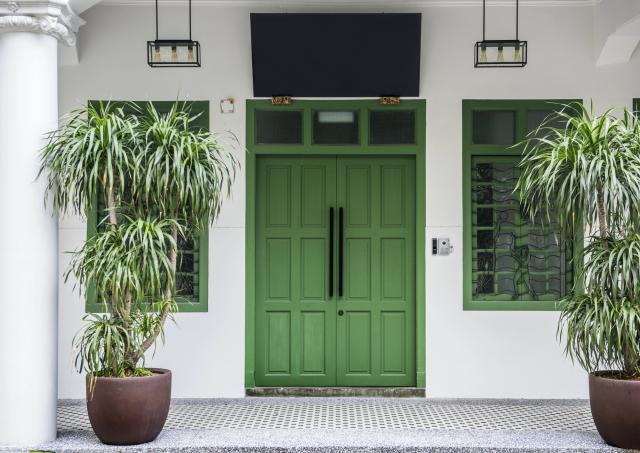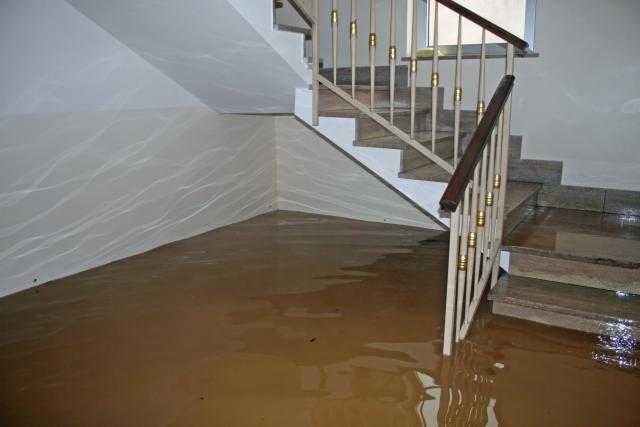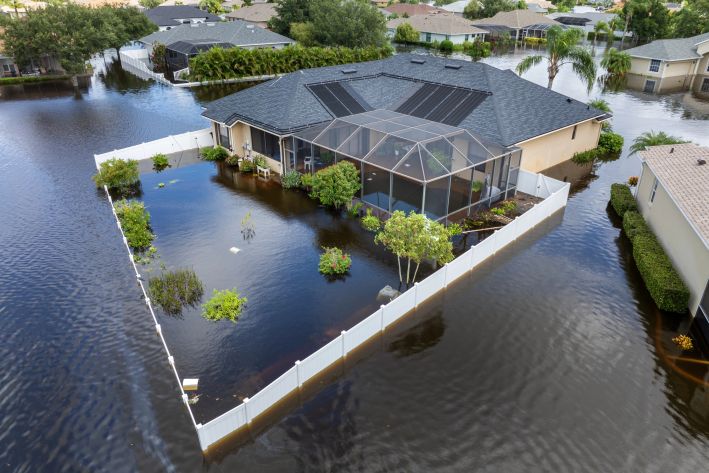
The Best Doors for Home Security and Curb Appeal
Today's homeowners prioritize door security without sacrificing style. Today's new front doors co...

Water damage stops for no one, and neither should your response. When water enters your home, you have only 24-48 hours before mold begins to develop, creating health risks and structural problems that can cost thousands more to repair. The type of water affecting your home makes a significant difference in how you should respond. Clean water from a burst pipe requires different handling than contaminated water from a sewage backup. Each category presents unique risks and cleanup requirements. Let's walk through everything you need to know about water damage cleanup and restoration, from immediate emergency steps to finding reliable repair services. You'll learn to identify different types of water damage, respond quickly to minimize costs, and prevent future incidents from affecting your home. Whether you're dealing with a small leak or major flooding, these strategies will help you protect your property and family.
Water damage occurs when unwanted moisture enters your home, affecting structural elements, personal belongings, and creating unhealthy conditions. Recognizing water damage means identifying both obvious signs, like wet floors and stained walls, plus hidden moisture behind walls that can trigger mold growth within 48 hours.
The key to effective flood damage restoration lies in identifying which type of water you're dealing with, as each category requires different safety measures and cleanup approaches.
Water damage falls into three distinct categories based on the level of contamination. Each category presents different health risks and restoration requirements:
|
Contamination Level |
Common Sources |
Health Risk |
Action Required |
|---|---|---|---|
|
Clean water |
Broken supply lines, rainwater, melting snow |
Low initially |
Remove within 24-48 hours |
|
Gray water |
Washing machine overflow, toilet overflow (urine only) |
Moderate |
Professional cleaning recommended |
|
Black water |
Sewage, river flooding, standing water |
Severe |
Immediate professional intervention |
Pro Tip: Clean water becomes gray after 24-48 hours of standing, as bacteria multiply rapidly in moist environments. Time is critical for preventing category escalation.
Clean water originates from sanitary sources that don't pose immediate health threats. Common sources include broken water supply lines, tub or sink overflows without contaminants, appliance malfunctions caused by supply line issues, and fresh rainwater.
Clean water damage allows for some DIY cleanup if you act quickly:
However, porous materials like carpet padding and drywall may still require professional assessment, especially if water has been present for more than 24 hours.
Best for: DIY cleanup when caught early, and limited to hard surfaces.
Gray water contains significant contamination that can cause illness through contact or consumption. Sources include washing machine overflows, dishwasher malfunctions, toilet overflows with urine only, and sump pump failures.
Gray water presents health risks from:
Gray water deteriorates to Category 3 within 48 hours if not properly addressed. Professional water damage repair services use specialized equipment and antimicrobial treatments to safely restore gray water damage.
Best for: Professional restoration to ensure proper sanitization and safety.
Black water contains dangerous contaminants, including harmful bacteria, viruses, and toxic substances. Contact with black water can cause serious illness or death. Sources include sewage backups, river flooding, toilet backflows with feces, and any standing water that has begun supporting dangerous microbial growth.
Black water requires immediate professional water damage cleanup because it contains:
Never attempt DIY cleanup of black water damage. Professional flood repair specialists have the proper protective equipment, specialized training, and industrial-grade sanitization tools required for safe handling.
If you encounter black water damage:
Best for: Professional restoration specialists with hazmat training and equipment.

Weather-related water damage ranks among the top causes of home flooding. Heavy rain during seasonal storms can overwhelm your home's drainage systems, leading to basement seepage through foundation cracks or overwhelmed window wells.
|
Storm Type |
Common Water Damage |
Primary Risk Areas |
|---|---|---|
|
Thunderstorms |
Roof leaks, basement seepage |
Attics, basements |
|
Hurricanes |
Structural flooding, storm surge |
Coastal homes, first floors |
|
Winter storms |
Ice dams, snowmelt flooding |
Rooflines, basements |
Standard home insurance typically excludes home flooding repair resulting from weather events. You'll need separate flood insurance for protection against storm-related flooding, particularly if you live in a high-risk area.
Pro Tip: After heavy rainfall, inspect your basement immediately for signs of water intrusion. Catching seepage early prevents mold growth and structural damage.
Flexible water hoses—called flexi hoses—cause the majority of professional water damage repair calls. These hoses connect water outlets in walls to sinks, washing machines, and toilets. They deteriorate over time and fail suddenly, often releasing hundreds of gallons per hour under constant pressure.
Frozen pipes create additional winter risks. Expanding ice generates enough pressure to split copper or PVC piping, leading to catastrophic flooding when temperatures rise.
Ensure you know the location of your main water shutoff valve. Quick action to stop water flow can save thousands in damage costs.
Several other common sources frequently lead to water damage:
Appliance malfunctions account for thousands of insurance claims annually. Washing machines, dishwashers, and water heaters can fail without warning, releasing significant amounts of water into your home.
Plumbing issues include leaking fixtures, deteriorated pipe joints, and sewer backups. These problems cause particular damage when they occur in walls or under floors where detection takes longer.
Structural problems create entry points for water. Compromised roofing, inadequate waterproofing, foundation cracks, and poor drainage around your home allow water intrusion during storms.
Poor maintenance makes these issues worse. Clogged gutters force water toward your foundation instead of away from it. Deteriorated caulking around bathtubs and showers allows water to seep into walls, creating hidden moisture problems that require extensive repairs.
When water enters your home, every hour counts. Quick action can mean the difference between a manageable cleanup and extensive structural repairs. Taking the right steps immediately helps prevent mold growth and minimizes damage to your property.
Safety is the top priority when dealing with water damage. Shut off potential hazards before beginning any cleanup:
Warning: Never touch electrical equipment while standing in water. If you smell gas, evacuate immediately and call the gas company from a safe location.
Inspect your home for structural issues, such as foundation cracks, sagging ceilings, or bowing walls. These signs indicate that the area may be unsafe and requires a professional assessment before you proceed.
After ensuring safety, start removing water and improving ventilation:
Remember that clean water degrades quickly, so remove it within the first day to prevent contamination and health risks.
Proper documentation strengthens your insurance claim:
|
Documentation Step |
Details |
Why It Matters |
|---|---|---|
|
Take photographs |
Clear, well-lit photos of all damage |
Essential for claim verification |
|
Record a video walkthrough |
Narrate what you're seeing |
Provides context that photos can't capture |
|
List damaged items |
Include descriptions and estimated values |
Supports reimbursement requests |
|
Save all receipts |
Keep expenses for cleanup and repairs |
May be reimbursable |
Contact your insurance company immediately to report the damage and understand what your policy covers for water-related incidents.
Professional water damage repair services become necessary under certain conditions:
Companies providing restoration services for flood damage near you have specialized moisture detection equipment to find hidden water in walls and the proper tools for safe extraction, drying, and sanitization.
Professional water damage restoration follows a systematic five-step approach to return your home to its pre-damage condition. The process requires specialized equipment and expertise to address both visible damage and hidden moisture that can cause problems months later.
Professional restoration begins with a thorough assessment to determine the extent of damage and create an action plan. Certified flood cleanup service providers use moisture meters to detect water in hard-to-reach places that may appear dry to the naked eye. This critical first step identifies:
|
Assessment Component |
Purpose |
Benefit |
|---|---|---|
|
Water category identification |
Determines contamination level |
Ensures proper safety protocols |
|
Moisture mapping |
Locates all affected areas |
Prevents missed water pockets |
|
Structural evaluation |
Identifies safety hazards |
Protects occupants and workers |
Once the inspection is complete, technicians remove standing water using industrial-grade equipment. Powerful submersible pumps and commercial wet vacuums extract water rapidly, as every hour water remains increases the severity of damage. Professionals also remove water-damaged carpet padding, which often acts as a sponge, retaining contamination.
Following extraction, the drying phase begins using specialized equipment:
This phase typically takes 2-3 days, depending on saturation levels and materials affected.
Once surfaces dry completely, professionals clean and disinfect all restorable items and structures. This step removes bacteria and contaminants using antimicrobial treatments while eliminating odors. Gray or black water contamination requires specialized cleaning protocols to ensure safety.
The final restoration phase involves replacing damaged materials that couldn't be salvaged. This includes installing new drywall, repairing hardwood floors, or replacing carpet. According to EPA guidelines, drywall affected by flooding must be removed to a height of 4 feet if the water level was below 2.5 feet, or 8 feet if the water level was higher.
Choosing the right water damage restoration service can impact your home's recovery as much as the damage itself. Poor restoration work can lead to hidden moisture problems, mold growth, and costly repairs down the road. The difference between professional restorers and inexperienced contractors becomes clear when specialized drying techniques and proper moisture detection are required.
Certifications separate legitimate restoration professionals from general contractors. The Institute of Inspection, Cleaning and Restoration Certification (IICRC) establishes industry standards for the repair of water damage.
|
Certification Type |
What It Means |
Why It Matters |
|---|---|---|
|
IICRC WRT (Water Damage Restoration Technician) |
Technicians trained in water removal, drying science |
Ensures proper drying techniques |
|
IICRC ASD (Applied Structural Drying) |
Advanced training in building materials drying |
Prevents secondary damage |
|
IICRC MSR (Mold Safety & Remediation) |
Specialized mold identification and removal |
Addresses health hazards |
Pro Tip: Ask restoration companies about their technicians' current certifications. Professional companies readily share this information and maintain up-to-date training records.
Customer reviews reveal how companies handle real emergencies.
Look for feedback about:
Emergency response capability matters most when water is actively damaging your home.
Quality restoration services provide:
Consider researching potential water damage companies before you need them. Contact local flood water damage restoration services to ask about certifications, response protocols, and insurance coordination. This preparation gives you confidence in the event of an emergency.
Once you've dealt with water damage, prevention becomes your next priority. Proper safeguards can save thousands in future repair costs and protect your home from recurring problems.
Sump pumps serve as the primary defense against water intrusion in your basement. These devices detect rising water levels and automatically pump excess water away from your foundation, preventing flooding during heavy storms.
Consider these key prevention systems:
Install water detection devices near appliances to catch leaks early. These inexpensive sensors can alert you to problems before they cause major damage.
Check your basement regularly for cracks in foundation walls and floor slabs. Even small cracks allow water to seep through during heavy rainfall. Waterproofing materials deteriorate over time, making regular resealing necessary to maintain protection.
Clean your gutters twice a year to prevent blockages that can direct water toward your foundation. Clogged gutters cause many exterior water problems. Make sure downspouts carry water at least 10 feet away from your home's foundation.
Consider grading your landscape to slope away from foundation walls. Poor drainage around your home creates conditions that allow water intrusion, which can result in costly repairs later.
Best for: Homeowners seeking to safeguard their investment and prevent costly future water damage repairs.
GET THE ESSENCE OF RELEVANT HOME
IMPROVEMENT TOPICS IN LESS THAN 5 MINUTES

The Best Doors for Home Security and Curb Appeal
Today's homeowners prioritize door security without sacrificing style. Today's new front doors co...

You could save $150 to $450 in plumber fees by replacing a tub faucet yourself. The task may seem...

Thanks for joining our homeowners’ community.
Stay tuned!
Choose the category
Choose the category